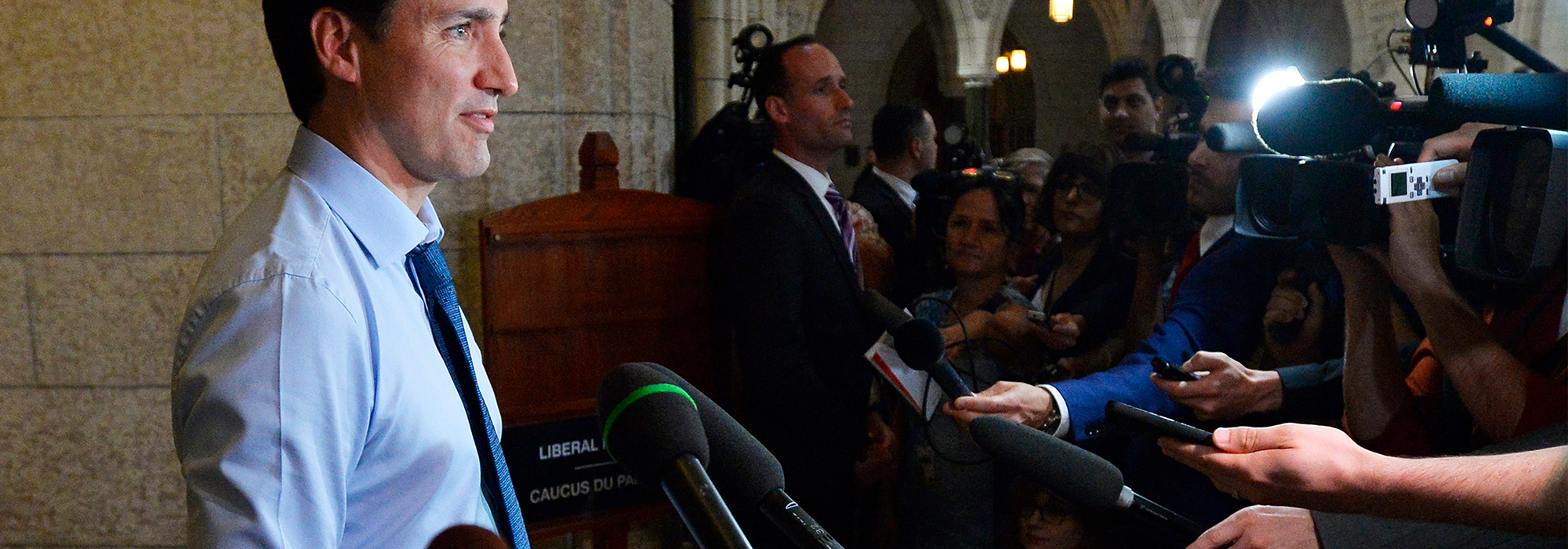
The federal government’s $595-million package to help news media, announced in the 2018 fall economic update, is a real opportunity that could catalyze growth and long-term sustainability for the industry.
The key word here is could. The details remain murky.
Depending on how these significant new funding measures are implemented, they could promote growth and innovation that has a positive impact on the industry’s sustainability and diversity long after the five years of funding ends.
On the flip side, the measures could simply create subsidy-dependent news outlets whose existence suppresses the development of self-sustaining business models. When the funding disappears at the end of its five-year run or with a change in government, we would be left with an unsustainable news sector – missing the opportunity for a meaningful systems change that could deliver real impact on communities.
Let’s be clear about the problems facing the news industry that these measures are intended to solve. We know that the changing economics of ad-based digital media favour national and global coverage, leading to the closure of 260 local news outlets in 190 communities in a decade. The tragedy of the decline of journalism is not that thousands of journalism jobs have been lost – it’s the resulting democratic deficit in those communities.
The news industry is desperately in need of business models that work, but that’s only one part of the problem. The sector currently has a diversity problem. Women and people of colour are underrepresented among newsroom management and in published stories, which means established media are failing to serve diverse audiences. So, if these measures don’t support renewal, and instead protect the sector in its current form, the next generation of Canadian media won’t serve or represent all Canadians.
As Anishinaabe comedian and journalist Ryan McMahon tweeted, “I support journalists, but when the industry is being really really honest with itself, this bailout will fail if the industry doesn’t innovate, adapt, and reflect the communities they purport to engage.”
So, how can these measures contribute to sustainability and diversity?
I’ll start with the good news. Both the creation of charitable tax incentives and an income tax credit for subscriptions empower regular Canadians to pay directly for the news they value. This is important because audience-pay models are experiencing strong growth. Both established players, including Torstar and the Globe and Mail, and new startups are responding to this market trend. The New York Times ended 2017 with more that $1 billion in subscription revenue and now describe themselves as a “subscription-first business.”
Canada lags behind the trend in the US but these government measures could accelerate a shift in consumer behavior already happening here. Bolstering audience-pay models not only contributes to the long-term sustainability of the sector but also incentivizes news organizations to be directly responsive to the public, not only to communities and people that advertisers value.
The new labour tax credit will likely subsidize the cost of journalism jobs at a wide variety of news outlets across the industry, from small nonprofits to large newspaper chains. This measure could provide temporary relief to the industry, buying it time to innovate new business models. But if it is not implemented in a way that incentivizes innovation and long-term sustainability, it will simply prop up a dying model. It could even hamper innovation and competition if it disproportionately benefits established outlets reliant on falling advertising revenues, by delaying the inevitable. (For an analogy, read The Logic’s astute analysis of how SR&ED credits may be producing zombie companies and slowing innovation.)
The fall economic statement also includes new details about the previously announced $50 million to support local journalism in underserved communities. It says the funding will go to not-for-profit organizations to produce content under a creative commons licence that can be published by local outlets for free, to help those outlets fill their publications with content they don’t have the capacity to produce on their own.
There’s merit in this approach, which borrows from the BBC’s Local News Partnership and can be adapted for the Canadian context. The program needs to respond directly to what local news organizations say they need to develop their own strategies for long-term sustainability. Otherwise, this too could risk creating long-term government dependence and interfere with their and their competitors’ abilities to develop viable business models. And so, it’s critical that a range of local news organizations meaningfully inform how this program is implemented.
My hope is that the people chosen for the independent industry panel tasked with determining eligibility and informing the implementation design will be diverse, in their background, geography and the type of outlet they represent. This will be critical for the measures’ credibility within the news industry, especially among journalists of colour.
All in all, the federal government’s package is an opportunity to revitalize the industry. It has the potential to be a significant investment by the Canadian people in the long-term sustainability of news media’s ability to serve them. So far, the conversation about the future of media in Canada has almost entirely focused on what is broken – the number of newspaper closures and journalism jobs lost. Meantime, dozens of outlets have opened during this challenging period, including some with models that are already working.
If we start looking at what’s working and seize the opportunity offered by the government measures to grow successful models faster, this could be a turning point towards a sustainable media ecosystem that serves all of us.
Photo: Prime Minister Justin Trudeau speaks to the media on Parliament Hill in Ottawa on June 20, 2018. THE CANADIAN PRESS IMAGES/Matthew Usherwood
Do you have something to say about the article you just read? Be part of the Policy Options discussion, and send in your own submission. Here is a link on how to do it. | Souhaitez-vous réagir à cet article ? Joignez-vous aux débats d’Options politiques et soumettez-nous votre texte en suivant ces directives.







